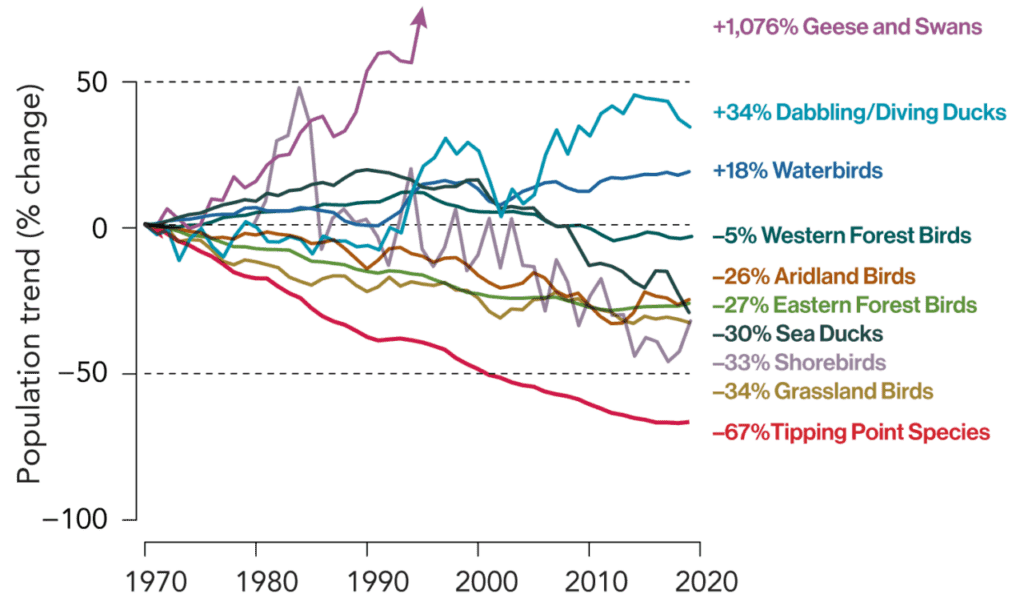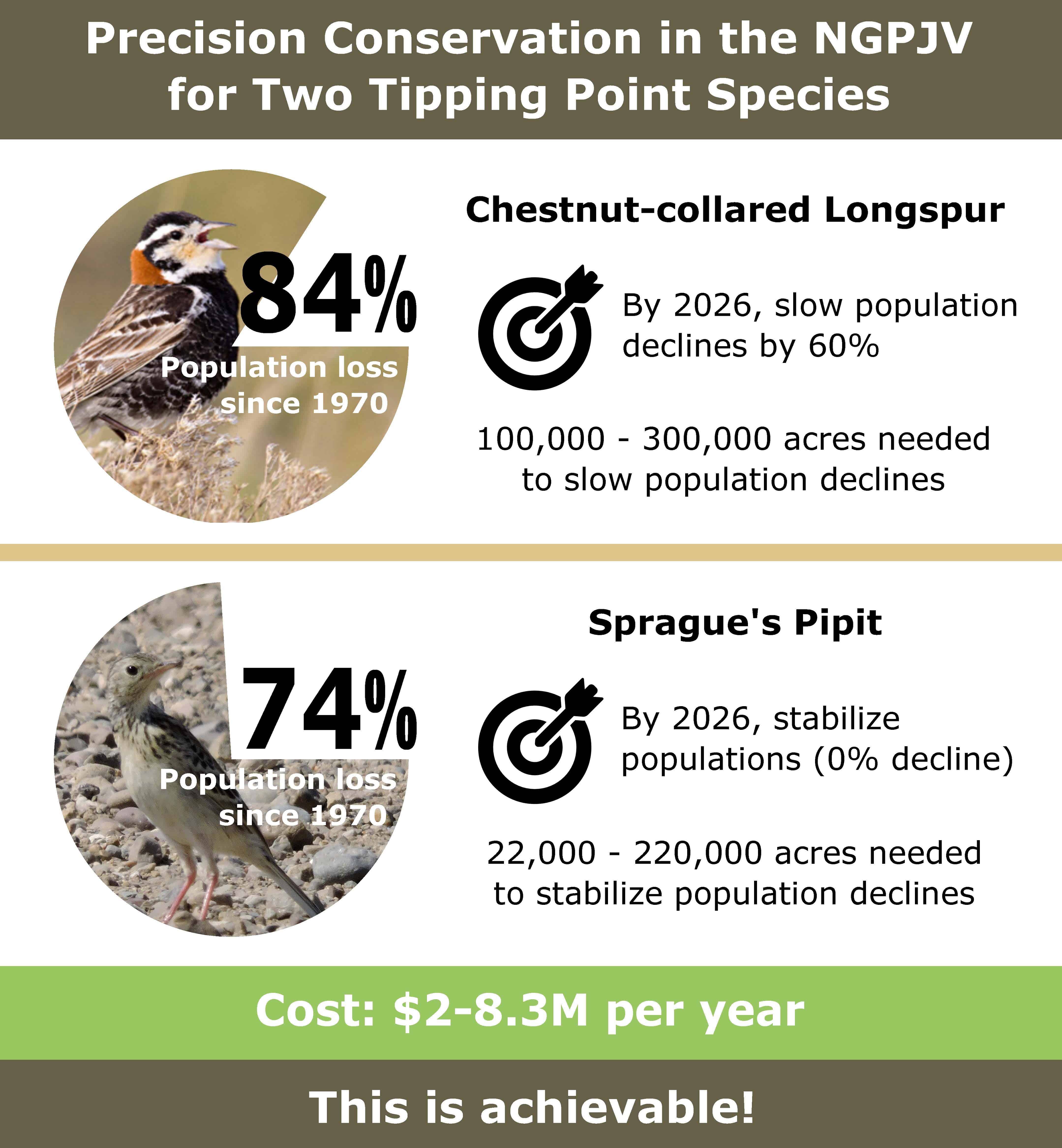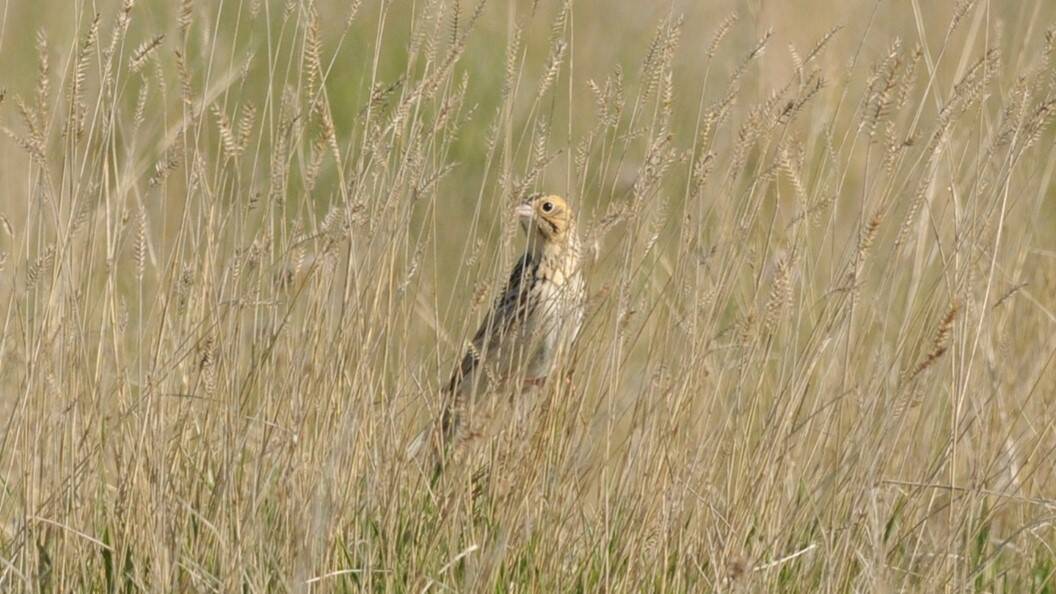The 2022 State of the Birds report was released in October with a sobering and urgent prognosis for birds. In the U.S., more than half of all bird species are showing population declines and 70 tipping point species have lost half or more of their populations in the last 50 years. Grassland birds are a standout in the report, showing the largest declines of any terrestrial habitat. As a mecca for breeding grassland birds, the Northern Great Plains is front and center in the fight to reverse these trends.

Producing America’s Grassland Birds
The Northern Great Plains supports the largest expanse of core breeding habitat for five of the most imperiled grassland birds, two of which are considered tipping point species in the 2022 State of the Birds. Unfortunately, while grassland conservation is gaining national attention, we simply are not making headway quickly enough. More than 60% of America’s native grasslands have been lost to agricultural conversion and, in the Northern Great Plains, 385,000 acres of grass were plowed for cropland in 2022 alone. These areas are critically important for grassland birds, and the loss of this habitat has contributed to the decline in their populations.
One of the challenges with grassland birds is that they fly under the radar, so to speak. They can’t be hunted or eaten and many people may go their entire life without seeing a Baird’s sparrow or Sprague’s pipit. Even within the scientific community, we often don’t have enough data to understand the damage that not having these species on the landscape would do. So why bother with grassland birds at all? The answer lies not in the birds themselves, but in the landscape they call home. Beyond providing habitat for birds and other wildlife, the native grasslands of the Northern Great Plains stabilize soils, reduce erosion, store carbon, improve water filtration and aquifer storage, and support vibrant grass-based economies. These services are incredibly important for people living in the region as well as those far beyond its boundaries.
Maintain the Core, Grow the Core

As a bird habitat conservation partnership, the Northern Great Plains Joint Venture (NGPJV) remains committed to finding co-created solutions for grasslands and grassland birds. To ensure continued production of grassland birds, our focus is to sustain core grasslands and retain at-risk areas – the Northern Great Plains is a prime place for this, as 71% of the region is still in grass. With 3/4 of the Northern Great Plains in private ownership and fifteen sovereign native Nations in the region, private landowners and Indigenous communities are the stewards of the grasslands and must be an integral part of any solution. Retaining core habitat is far more cost-effective than building back after it has been removed, so the time to invest in these people and this place is now. Providing voluntary, incentive-based programs to the people who are working to retain, enhance, restore, and protect this landscape is the only way to build resilient grasslands and robust bird populations.
When we help birds thrive, we sustain the essential habitat needed for healthy communities, productive agriculture, natural resources, and wildlife. The challenges we face are significant, but we have good reason to be optimistic. While the State of the Birds showed that birds across the country have declined in almost every habitat, waterbirds and ducks bucked that trend due in large part to the efforts of Joint Venture partners. Concerted efforts for wetlands, favorable policies, and substantial conservation investments made a big difference. Joint Ventures are particularly well suited to apply this model to grasslands with their foundation in cooperative, diverse partnerships, and the NGPJV has a vital role to play in the future of our grasslands. “Strategic investments now will support long-term sustainability of grasslands, birds, and rural economies in the Northern Great Plains,” said Catherine Wightman, NGPJV Coordinator.
The hope is that this report will galvanize a broader audience around the plight of grasslands and grassland birds so we can drive policy change and bring more funding and resources to the region. Our mission going forward is to maintain the focus on grasslands and ensure decision makers recognize the most important places and actions for making a difference in grassland bird conservation. Slowing and stabilizing breeding bird populations within the Northern Great Plains is within reach with focused investment of resources. NGPJV partners have the expertise, willpower, and vision to get this done.
Visit the State of the Birds website to learn more about the path forward.


